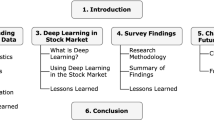Abstract
The recent crisis made it evident that replicating the performance of a benchmark is not a sufficient goal to meet the expectations of usually risk-averse investors. The manager should also consider that the investors are seeking downside protection when the benchmark performs poorly and thus they should integrate a form of downside risk control. We propose a multiperiod double tracking error portfolio model which combines these two goals and provides enough flexibility. In particular, the control of the downside risk is carried out through the presence of a floor benchmark with respect to which we can accept different levels of shortfall. The choice of a proper measure for downside risk leads to different problem formulations and investment strategies which can reflect different attitudes towards risk. The proposed model is tested through a set of out-of-sample rolling simulations in different market conditions.












Similar content being viewed by others
References
Alexander GJ, Baptista AM (2004) A comparison of VaR and CVaR constraints on portfolio selection with the mean-variance model. Manag Sci 50(9):1261–1273
Alexander GJ, Baptista AM (2006) Portfolio selection with a drawdown constraint. J Banking Financ 30:3171–3189
Barro D, Canestrelli E (2009) Tracking error: a multistage portfolio model. Ann Oper Res 165(1):44–66
Basak S (1995) A general equilibrium of portfolio insurance. Rev Financ Stud 8:1059–1090
Basak S, Shapiro A, Tepla L (2003) Risk management with benchmarking. Working Paper Series Asset Management SC-AM-03-16, Salomon Center for the study of financial institutions, NYU
Black F, Jones R (1987) Simplifying portfolio insurance. J Portfolio Manag 14(1):48–51
Black F, Perold AR (1992) Theory of constant proportion portfolio insurance. J Econ Dyn Control 16:403–426
Boyle P, Tian W (2007) Optimal portfolio with constraints. Math Financ 17:319–343
Brennan M, Solanki R (1981) Optimal portfolio insurance. J Financ Quant Anal 16:279–300
Browne S (1999) Beating a moving target: optimal portfolio strategies for outperforming a stochastic benchmark. Financ Stoch 3:255–271
Chekhlov A, Uryasev S, Zabarankin M (2005) Drawdown measure in portfolio optimization. Int J Pure Appl Financ 8(1):13–58
Consiglio A, Saunders D, Zenios SA (2006) Asset and liability management for insurance products with minimum guarantees: the UK case. J Banking Financ 30:645–667
Deelstra G, Grasselli M, Koehl P-F (2003) Optimal investment strategies in the presence of a minimum guarantee. Insur Math Econ 33:189–207
Deelstra G, Grasselli M, Koehl P-F (2004) Optimal design of the guarantee for defined contribution funds. J Econ Dyn Control 28:2239–2260
Dembo R, Rosen D (1999) The practice of portfolio replication, a practical overview of forward and inverse probems. Ann Oper Res 85:267–284
Dempster MHA, Thompson GWP (2002) Dynamic portfolio replication using stochastic programming. In: Dempster MHA (ed) Risk management: value at risk and beyond. Cambridge University Press, Cambridge, pp 100–128
Dempster MAH, Germano M, Medova EA, Rietbergen MI, Sandrini F, Scrowston M (2004) Designing minimum guaranteed return funds. Research Papers in Management Studies. University of Cambridge, WP 17/2004
Dupacova J, Consigli G, Wallace SW (2000) Scenarios for multistage stochastic programs. Ann Oper Res 100:25–53
El Karoui N, Jeanblanc M, Lacoste V (2005) Optimal portfolio management with American capital guarantee. J Econ Dyn Control 29:449–468
Franks EC (1992) Targeting excess-of-benchmark returns. J Portfolio Manag 18:6–12
Gaivoronski A, Krylov S, van der Vijst N (2005) Optimal portfolio selection and dynamic benchmark tracking. Eur J Oper Res 163:115–131
Jansen DW, Koedijk KG, de Vries CG (2000) Portfolio selection with limited downside risk. J Empir Financ 7:247–269
Jensen BA, Sorensen C (2001) Paying for minimal interest rate guarantees: who should compensate whom? Eur Financ Manag 7:183–211
Jorion P (2003) Portfolio optimization with tracking-error constraints. Financ Anal J 59(5):70–82
Konno H, Yamazaki H (1991) Mean absolute deviation portfolio optimization model and its applications to Tokyo stock market. Manag Sci 37:519–531
Kouwenberg R, Zenios SA (2006) Stochastic programming models for asset liability management. In: Zenios SA, Ziemba WT (eds) Handbook of asset and liability management 1, theory and methodology. Elsevier, North Holland
Krokhmal P, Zabarankin M, Uryasev S (2011) Modeling and optimization of risk. Surv Oper Res Manag Sci 16:49–66
Lee H-I, Chiang M-H, Hsu H (2008) A new choice of dynamic asset management: the variable proportion portfolio insurance. Appl Econ 40:2135–2146
Leland HE, Rubinstein M (1976) The evolution of portfolio insurance. In: Luskin DL (ed) Portfolio insurance: a guide to dynamic hedging. Wiley, New York
Liang J (2009) Multistage tracking model. Solutions and analysis. International Conference on Electronic Commerce and Business Intelligence. IEEE Computer Society, pp 366–369
Michalowski W, Ogryczak W (2001) Extending the MAD portfolio optimization model to incorporate downside risk aversion. Naval Res Logist 48:185–200
Rockafellar RT, Uryasev S (2000) Optimization of conditional value at risk. J Risk 2:21–41
Rudolf M, Wolter H-J, Zimmermann H (1999) A linear model for tracking error minimization. J Banking Financ 23:85–103
Sorensen C (1999) Dynamic asset allocation and fixed income management. J Financ Quant Anal 34:513–531
Worzel KJ, Vassiadou-Zeniou C, Zenios SA (1994) Integrated simulation and optimization models for tracking fixed-income indices. Oper Res 42(2):223–233
Zenios SA (2007) Practical financial optimization: decision making for financial engineers. Blackwell, Cambridge
Acknowledgments
The authors thanks Dott. Fabio Lanza for the research assistance in the computational experiments, and two anonymous referees for useful comments.
Author information
Authors and Affiliations
Corresponding author
Rights and permissions
About this article
Cite this article
Barro, D., Canestrelli, E. Downside risk in multiperiod tracking error models. Cent Eur J Oper Res 22, 263–283 (2014). https://doi.org/10.1007/s10100-013-0290-y
Published:
Issue Date:
DOI: https://doi.org/10.1007/s10100-013-0290-y



